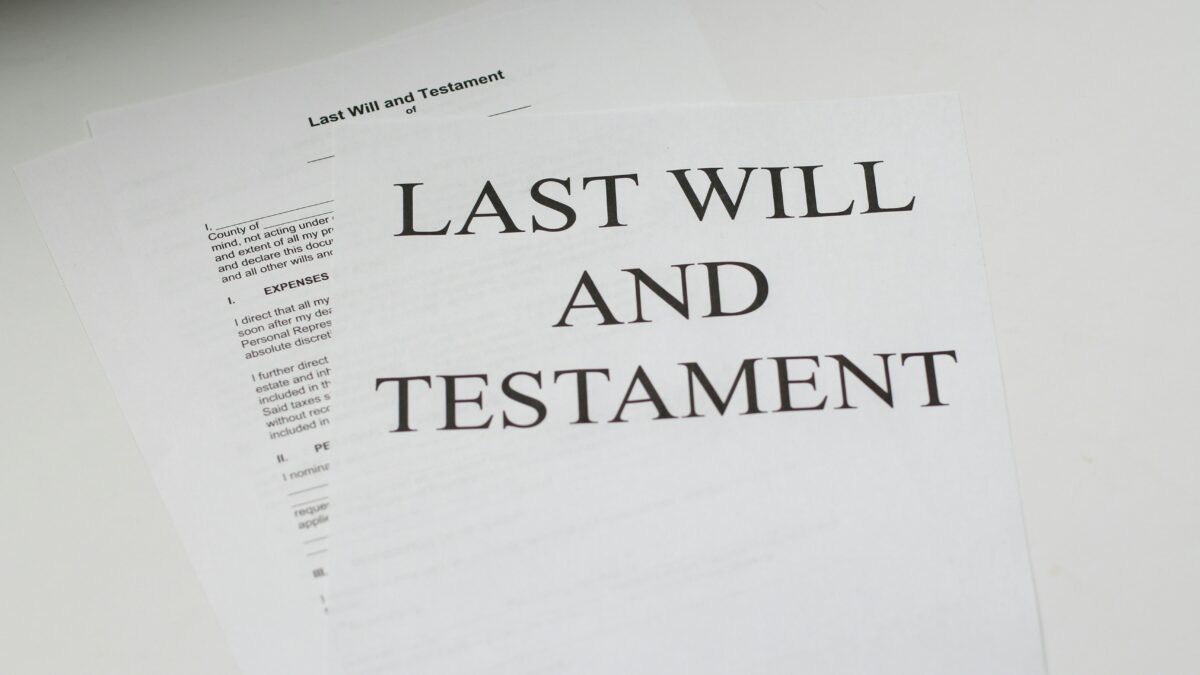Understanding What a Codicil Is: Updating Your Will the Right Way

What Is a Codicil?
A codicil is essentially a legal document that amends or supplements an existing Will without requiring a complete rewrite. This powerful tool allows you to modify various aspects of your Will, including:
-
Adding or removing beneficiaries
-
Changing the distribution of assets
-
Updating the terms of the original Will
-
Correcting mistakes or oversights in the original document
Codicils provide flexibility in estate planning, allowing you to make necessary adjustments as your life circumstances change. They are particularly useful for minor modifications when a full amendment may be unnecessary or impractical.
How to Add a Codicil to a Will
Creating a codicil involves drafting a written amendment that references the original Will and specifies the changes. For a codicil to be valid, it must be executed with the same formalities as the original Will. This typically means:
-
The document must be in writing
-
It must be signed by you (the testator)
-
It must be properly witnessed according to legal requirements
-
It should be notarised in accordance with applicable laws
When adding a codicil to a Will, you should:
-
Be clear and specific about which part of the Will is being changed
-
State the new terms explicitly
-
Ensure the codicil clearly references the original Will
-
Have the document properly witnessed and executed
-
Store it with your original Will
Common Reasons for Amending a Will
There are numerous situations where amending a Will through a codicil might be appropriate:
-
Changing executors or trustees
-
Adding a new beneficiary (such as a newborn child or grandchild)
-
Removing a beneficiary
-
Updating specific bequests
-
Modifying distribution amounts
-
Correcting errors in the original Will
For example, if your Will includes a provision for distributing funds to a beneficiary upon reaching a certain age, and you later decide to lower that age requirement, a codicil can be used to make this change without requiring a full amendment.
Codicil Example
Example of a Simple Codicil:
“I, [Your Full Name], of [Your Address], declare this to be a codicil to my Last Will and Testament dated [Original Will Date].
I hereby amend Article III of my Will to remove Jane Smith as executor and appoint John Brown of [Address] to serve as executor in her place.
In all other respects, I confirm and republish my Will dated [Original Will Date].
Signed this [Date]”
This document would then need to be signed and witnessed according to legal requirements, just as with the original Will.
Pitfalls to Avoid When Using Codicils
Despite their convenience, codicils can introduce complications if not done correctly. Common mistakes include:
-
Failing to properly execute the document: Not having the codicil properly witnessed or notarised, or not following specific execution requirements outlined in the original Will.
-
Not updating related documents: If your Will references other documents like power of attorney or healthcare directives, these may need updating to ensure consistency.
-
Creating ambiguity: Vague language may lead to misinterpretation or conflict among heirs.
-
Introducing contradictions: Multiple codicils over time can create inconsistencies with the original Will.
-
Not considering tax implications: Changes to your Will could affect the tax classification of your estate, potentially impacting your beneficiaries’ tax liability.
When to Create a New Will Instead
While codicils are useful for small updates, they are not always the best solution. Consider drafting a new Will instead of using a codicil when:
-
You need to make significant or multiple changes
-
Your circumstances have changed substantially
-
You’ve already created several codicils
-
The changes might create confusion or contradictions
-
You want to ensure clarity and avoid potential disputes
For more complex changes, it’s often clearer and safer to revoke the old Will and create a new one entirely.
Best Practices for Using Codicils
To use a codicil effectively and safely:
-
Be specific: Clearly state which part of the Will is being changed and what the new terms are.
-
Limit the number: If you have made several changes over time, consider drafting a new Will to avoid confusion.
-
Seek legal advice: Have a solicitor review or draft the codicil to ensure it is legally sound.
-
Store properly: Keep the codicil in the same secure place as your Will to ensure they are found together.
-
Review regularly: Life changes, and your Will may need to be updated to reflect those changes.
-
Communicate with executors: Let your executors know about the codicil to prevent surprises or disputes later.
Working with a Legal Professional
When considering amending a Will, working with a qualified solicitor is crucial. A legal professional can:
-
Help navigate the legal requirements
-
Ensure your codicil is valid and legally binding
-
Provide guidance on the best approach for your specific situation
-
Help you understand the implications of your modifications
-
Ensure your estate planning documents work cohesively together
How Our Team Can Help
Our experienced team of Wills and Probate specialists are here to guide you through every step of the process, whether you are updating your Will with a codicil or drafting a new Will. We will ensure that your wishes are reflected accurately and legally.
Let us take the stress out of the legal process so you can have peace of mind about the future.
For expert advice on updating your Will, contact Nazmin Sultan-Khan (Solicitor) in our private client team on 0203 794 8280.


